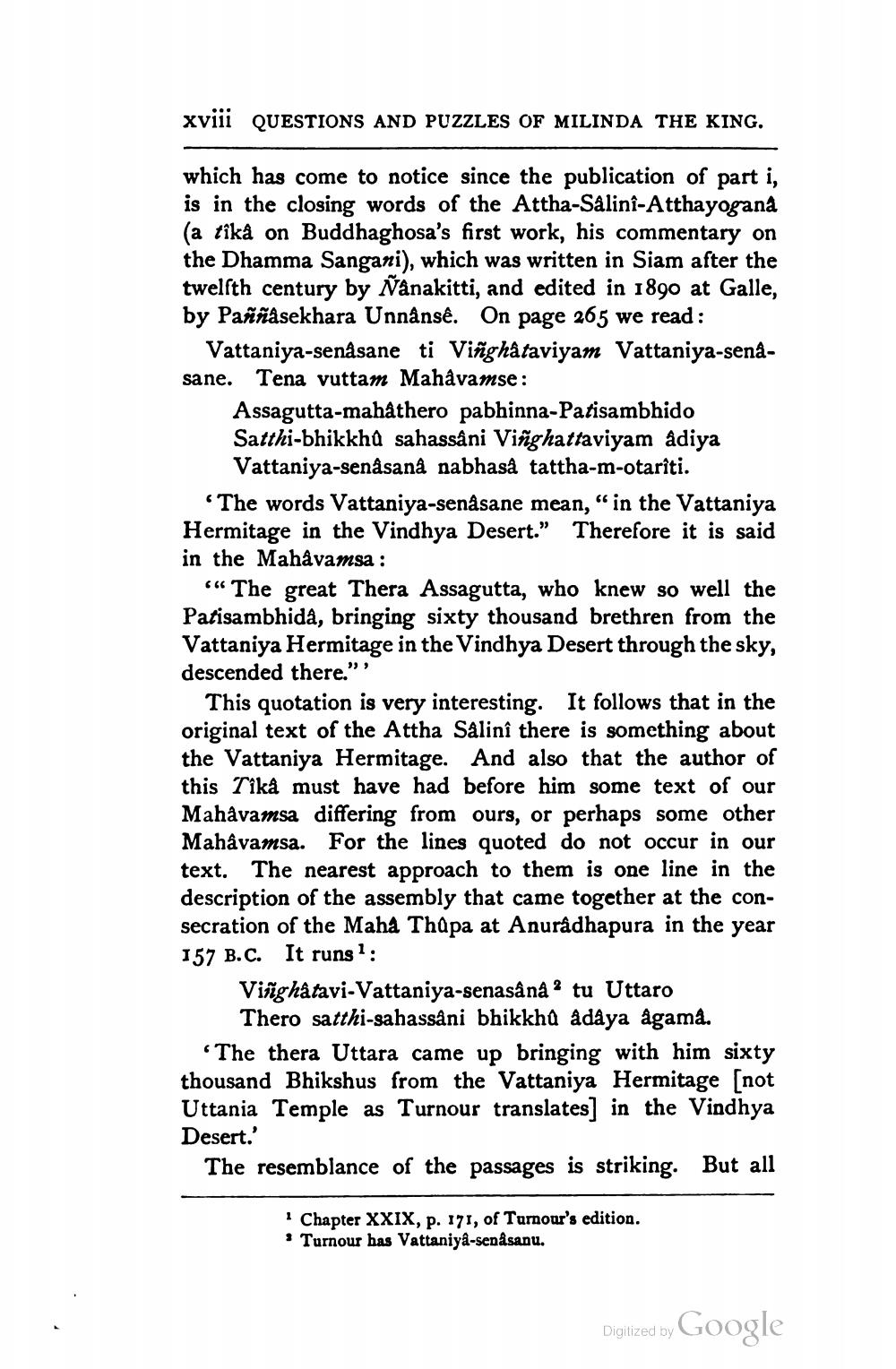________________
xviii QUESTIONS AND PUZZLES OF MILINDA THE KING.
which has come to notice since the publication of part i, is in the closing words of the Attha-Salinî-Atthayogana (a tîkä on Buddhaghosa's first work, his commentary on the Dhamma Sangani), which was written in Siam after the twelfth century by sanakitti, and edited in 1890 at Galle, by Paññasekhara Unnansê. On page 265 we read:
Vattaniya-senåsane ti Viñghataviyam Vattaniya-senasane. Tena vuttam Mahavamse:
Assagutta-mahâthero pabhinna-Patisambhido Satthi-bhikkhở sahassani Viñghattaviyam adiya
Vattaniya-sena sana nabhaså tattha-m-otariti. “The words Vattaniya-senåsane mean,“ in the Vattaniya Hermitage in the Vindhya Desert." Therefore it is said in the Mahavamsa :
"" The great Thera Assagutta, who knew so well the Patisambhida, bringing sixty thousand brethren from the Vattaniya Hermitage in the Vindhya Desert through the sky, descended there."
This quotation is very interesting. It follows that in the original text of the Attha Salinî there is something about the Vattaniya Hermitage. And also that the author of this Tikå must have had before him some text of our Mahavamsa differing from ours, or perhaps some other Mahavamsa. For the lines quoted do not occur in our text. The nearest approach to them is one line in the description of the assembly that came together at the consecration of the Maha Thapa at Anuradhapura in the year 157 B.C. It runs :
Viñighâtavi-Vattaniya-senasânå? tu Uttaro
Thero satthi-sahassani bhikkhu adaya agama. “The thera Uttara came up bringing with him sixty thousand Bhikshus from the Vattaniya Hermitage [not Uttania Temple as Turnour translates] in the Vindhya Desert.'
The resemblance of the passages is striking. But all
Chapter XXIX, p. 171, of Turnour's edition. Turnour bas Vattaniya-senåsanu.
Digitized by Google




